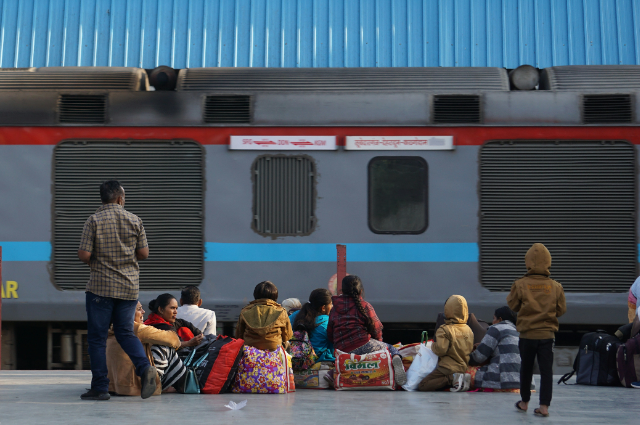
Photo by Shruti Singh on Unsplash
Introduction
Migration has been a defining feature of India's socio-economic landscape, shaping its cultural diversity and labor dynamics. Among the modes of transport facilitating this phenomenon, railways have played a pivotal role in connecting individuals to opportunities across vast distances. This article explores the emergence of West Bengal and Rajasthan as new migrant hotspots, with Uttar Pradesh leading as the largest contributor to migratory flows.
1. Migration in India: An Overview
Migration within India is a complex process influenced by factors like economic disparities, employment opportunities, education, and climate change. According to census data and labor surveys, millions of people move annually, reshaping urban and rural demographics.
2. Railways: The Lifeline of Migration
The Indian Railways has been an integral part of migration, offering affordable and accessible transportation. Trains like the Kumbh Express, Mahananda Express, and Purva Express connect the northern belt with key cities, serving as conduits for both temporary and permanent migration.
3. Historical Perspective on Migration Trends
Historically, migration in India has been driven by colonial economic structures, regional disparities, and post-independence urbanization. The Green Revolution in the 1960s and industrial booms further influenced migratory flows, with railways facilitating the movement of labor to industrial hubs.
4. Uttar Pradesh: The Largest Migrant-Sending State
Uttar Pradesh (UP) tops the list of states contributing to interstate migration. The state's rural population often migrates to metropolitan areas and emerging industrial zones in search of better livelihoods. Push factors like unemployment and agricultural distress are countered by the pull of opportunities in urban centers.
5. West Bengal: A Rising Migrant Destination
West Bengal, traditionally known for out-migration, is now witnessing a reverse trend. The state’s industrial resurgence, cultural affinity, and socio-political stability attract migrants, particularly from neighboring states like Bihar and Jharkhand. The state’s diverse economic opportunities in sectors like textiles, jute, and IT contribute to this influx.
6. Rajasthan: The Surprising Hotspot
Rajasthan has emerged as an unexpected destination for migrants. With sectors like tourism, construction, and gemstone industries flourishing, the state attracts laborers from Uttar Pradesh, Bihar, and Madhya Pradesh. The Desert Express and Jaipur-Bandra Terminus Express are vital railway routes supporting this migratory trend.
7. Economic Factors Driving Migration
Economic disparity remains a central driver of migration. States like UP and Bihar have limited industrial development, pushing individuals to migrate to regions like Rajasthan and West Bengal. These destinations offer higher wages, job diversity, and better living standards.
8. Challenges Faced by Migrants
Migrants often face challenges such as:
- Poor living conditions
- Lack of social security
- Exploitation by employers
- Language and cultural barriers
9. Role of Railways in Ensuring Migrant Welfare
Indian Railways plays a crucial role in supporting migrants by introducing affordable fares, enhancing connectivity, and launching schemes for workers. Special trains during peak migration seasons and the availability of unreserved tickets make migration feasible for economically weaker sections.
10. Government Policies on Migration
Several policies and schemes aim to support migrants:
- Pradhan Mantri Awas Yojana (PMAY) for housing
- One Nation, One Ration Card (ONORC) for food security
- MGNREGA for rural employment
11. Migration Post-COVID-19
The COVID-19 pandemic reshaped migration patterns, highlighting vulnerabilities in the system. Reverse migration from cities to villages showcased the dependence on urban centers. Post-pandemic, states like West Bengal and Rajasthan are leveraging this shift to attract and retain labor.
12. The Cultural Impact of Migration
Migration fosters cultural exchange and enriches host regions. Festivals, cuisines, and traditions of migrant communities contribute to the social fabric, making urban spaces more vibrant and diverse.
Conclusion
The dynamics of migration in India continue to evolve, influenced by economic opportunities and regional policies. While Uttar Pradesh remains the largest contributor, the rise of West Bengal and Rajasthan as migrant destinations marks a significant shift. Indian Railways, as the backbone of this movement, underscores the importance of connectivity in shaping migration trends.
. . .
References:
- Ministry of Railways, Government of India
- Census of India, 2011
- Economic Survey of India, 2021-2022
- Indian Express, Migration Statistics
- International Organization for Migration (IOM)
- Labor Migration and Employment in India, World Bank
